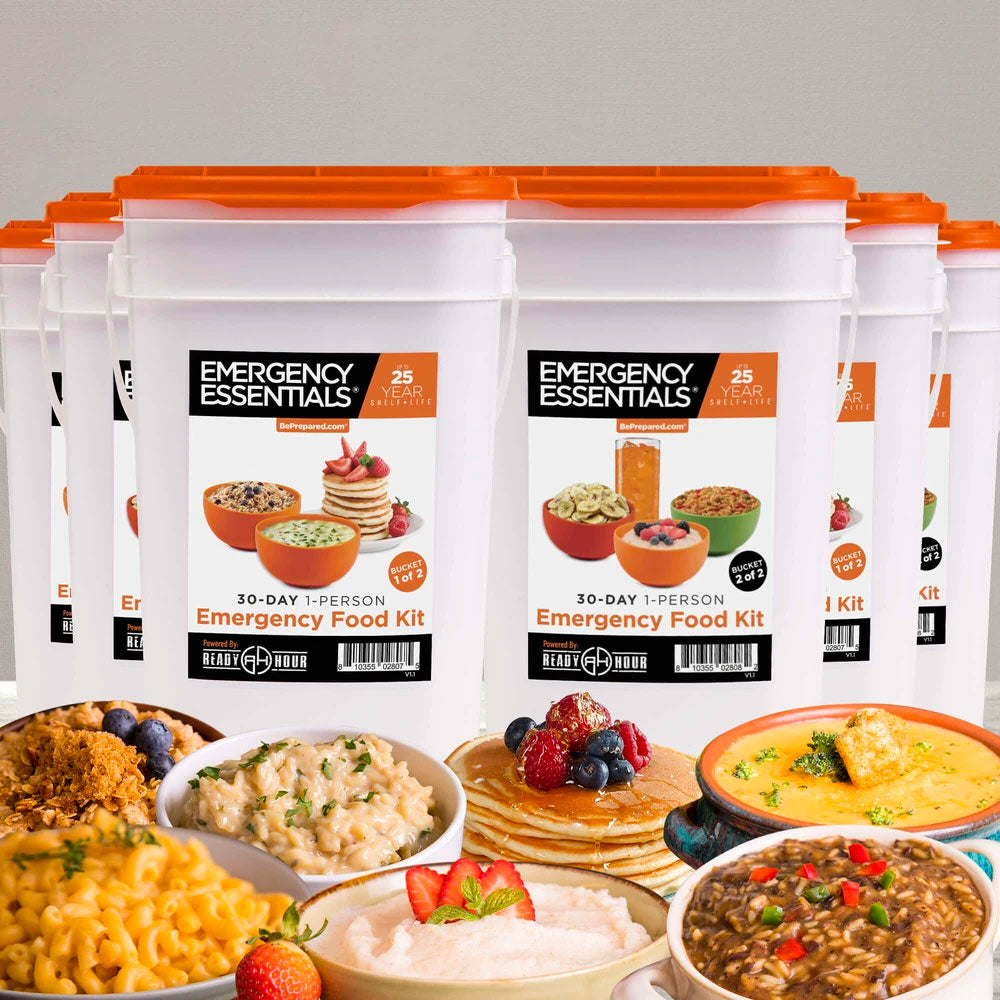Prepping with Kids: Family Strategies for Calm and Confident Emergency Preparedness

Preparing Together Without Panic
Ever notice how your kids perk up the instant a news alert mentions an earthquake or blackout?
They catch every word, yet their imaginations race ahead.
The parental challenge is turning that buzz into constructive child preparedness without feeding nightmares.
Thoughtful context setting, short explanations, and hands-on tasks shift the emergency context from something mysterious to a family safety project everyone understands.
This steadily builds risk awareness.
In the next few minutes you'll see a framework for keeping conversations calm while building practical skills.
We'll cover concrete steps to reduce fear, assign kid-friendly roles, and help your household make quick decisions when seconds matter.
What You'll Learn about Prepping with Kids
- Benefits of letting kids help from preschool onward
- Age-specific ways to talk through each likely hazard
- Building a shared emergency supply kit step by step
- Everyday games that quietly reinforce safety actions
- Short household drills that lock in confident reflexes
Key Takeaway: Prepping with Kids, Without the Panic
Involving your children in emergency preparedness boosts their confidence and builds lifelong safety habits. It doesn't have to be scary. This article covers strategies—turning anxiety into action through kid-friendly roles, games, and practical household drills—designed to keep everyone calm, informed, and genuinely ready for anything.
Learn more about the 3-Month Emergency Food KitBest Topics for Teaching Kids Preparedness
- Hazard Awareness Games – playful routes to local disaster knowledge
- Personal Safety Actions – child-friendly drills that create safety reflexes
- Grab-and-Go Kit Scavenger Hunts – hands-on lessons in planning basics
- Communication Trees – step-by-step family contact plans
- Comfort and Coping Strategies – emotional tools that keep confidence steady
Hazard Awareness Games and Child Preparedness
You turn earthquake facts or storm risks into a board game or backyard obstacle course.
This lets children absorb disaster knowledge through play.
Short rounds hold attention and low-stakes points encourage repeat practice.
Games ease anxiety because the information arrives in a familiar, relaxed setting that feels like everyday fun.
- Map matching: pair hazard icons with real spots in your neighborhood
- "Safe or Sorry" card flips highlight secure versus risky household items
- Timer rounds imitate real decision speed while keeping stakes low

Personal Safety Actions for Kids
DROP, COVER, and HOLD ON becomes muscle memory when kids practice before the ground ever shakes.
Start around age four by using couch cushions as "tables" and counting aloud for ten seconds.
Regular child-friendly drills reinforce safety education.
They promote confidence building and replace last-minute chaos with practiced calm.
Add age-appropriate skills as kids grow.
These include turning off the water valve, sending a text to an out-of-area contact, or spotting sturdy furniture to brace against.
Keep the tone positive and frame every new step as teamwork.
- Monthly mini-drills stay brief and prevent overwhelm
- Visual cue cards by beds remind kids even at night
- Progress charts celebrate new age-appropriate skills
"At age four, children can start learning safety actions, such as DROP, COVER, and HOLD ON. Encourage team practice, reinforce positive habits, and let kids know their role matters in keeping everyone safe."
Grab-and-Go Kit Scavenger Hunts for Prepping
You guide a house-wide treasure hunt for flashlights, healthy snacks, and comfort items. This turns supply gathering into an adventure.
Label an old backpack with each child’s name so they feel ownership.
This approach teaches planning basics and prioritization without a lecture.
- One comfort item per kit keeps stress lower during evacuation
- Keep each pack under ten percent of the child’s body weight
- Seasonal check-ins refresh sizes, medications, and batteries
Hands-on packing also shows why bulky toys stay home and light essentials stay.
Communication Trees for Emergencies
A laminated flowchart spells out who texts whom when networks clog.
Kids learn the out-of-area contact and two rally points: a nearby park and a distant relative’s home.
A clear tree trims reunion time and eases panic when calls fail.
- Practice sending pre-written SMS templates
- Color-code contacts so non-readers follow the plan
- Post copies inside backpacks and the family vehicle
Comfort and Coping Strategies
You balance physical readiness with emotional steadiness.
Quiet-time bags hold notebooks for drawing, a favorite story, and a charged playlist.
Teaching preparedness means showing healthy ways to name feelings, breathe through tension, and keep morale intact.
- Ready-to-go calm bags for shelters or power outages
- Rotating "calm corners" at home for daily practice
- Nightly family discussion encourages open questions
Together, these five areas weave safety education and practical planning into everyday life.
They help raise capable kids who meet emergencies with confidence rather than fear.
Practical Steps to Engage Children Calmly and Confidently
You want kid engagement without rising anxiety.
When food supplies feel shaky, we lean on our 3-Month Emergency Food Kit for breathing room.
A stocked shelf removes one big worry and lets you focus on teaching safety skills with calm communication.
Picture a simple framework: an action plan, repeatable family drills, and a pantry that stays full.
Each piece supports the next, forming a tool kit that grows with your children.
Follow the step-by-step guide below to turn practice routine into everyday habit and give everyone a confidence boost.
Build Skills Through Play
- Set a monthly "readiness hour." Begin with DROP, COVER, and HOLD ON so kids four and older lock in muscle memory.
- Host a grab-and-go scavenger hunt. Every child packs water, a comfort item, and some essential supplies in a personal bag.
- Create a color-coded communication tree. During the drill, send a short SMS to your out-of-area contact.
- Close with a debrief circle. Ask what felt easy, what felt tricky, then pick one tweak for the next family drill.
3-Month Emergency Food Kit: Your Reliable Preparedness Solution

3-Month Emergency Food Kit
This comprehensive kit provides 2,011 calories and 43.8 grams of protein per person, per day. It supports sharp thinking and lasting energy for up to 90 days. Secure, stackable, U.S.A.-made, and designed for quick, one-pot prep—perfect for families through any situation.
Food Security Powers Every Lesson
- 2,011 calories per person per day.
- Lightweight pails stack neatly and double as stools for shelter-in-place sessions.
- One-pot meals cook fast, so your attention stays on kid engagement, not the stove.
Reliable nutrition plus clear implementation steps support children as they learn through playful drills.
You stay composed because essentials are handled.
Keep the rhythm steady and watch household confidence climb.
Repeat every season and update supplies as kids grow.
Empower Your Family Today
Here’s your wrap-up takeaway summary of our preparedness recap:
You’ve guided kids through DROP, COVER, and HOLD ON, organized a color-coded communication tree, considered pets, and assembled a two-week kit.
Each action strengthens family empowerment and creates a connection between practice and confidence.
This fuels motivation and helps build a lasting safety commitment.
Take the Next Step—Build Confidence, Not Fear
Give your family peace of mind by starting a calm, preparedness-focused routine today. Learn more about how the 3-Month Emergency Food Kit works and join other Ready Master families taking proactive steps for safety and resilience.
Learn More©copyright 2025
ReadyMaster, all rights reserved.
